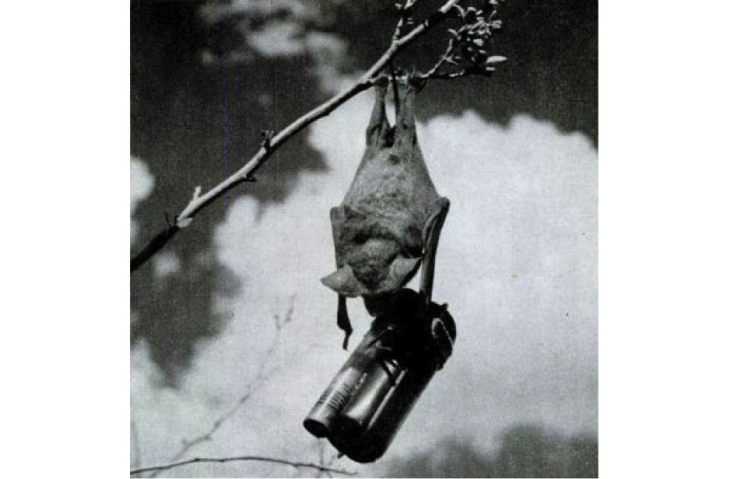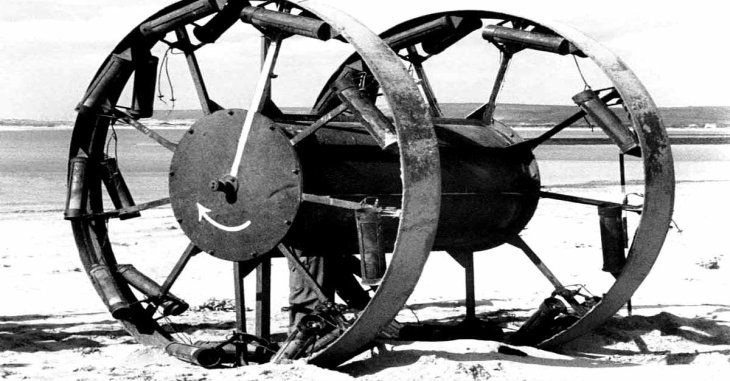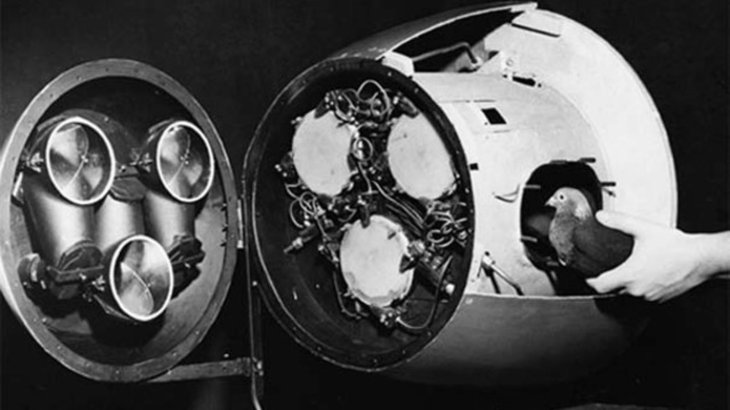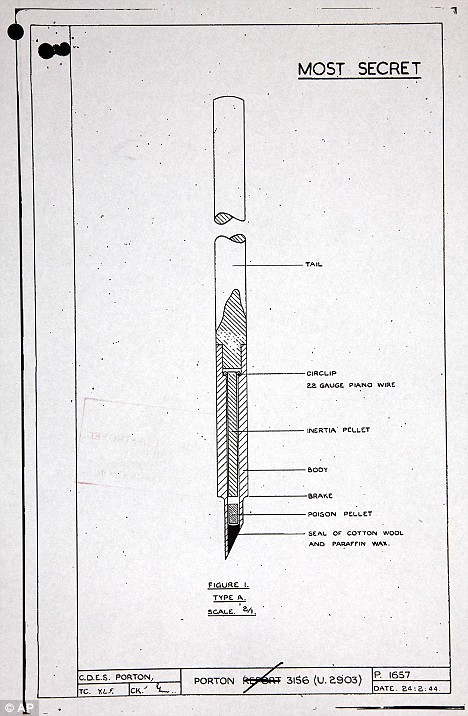The Most Fantastic And Bizarre Weapons You Have Ever Seen
Aadhya Khatri - Jun 19, 2019

Wartime calls for innovation and invention of all kinds. Some of them were fantastic, like the Gustav Gun, while other ware weird
- This Bullet-Guiding System Can Turn Literally Anyone Into Professional Snipers
- This Electrocution Weapon Can Paralyze You From 100 Meters Away
- Must-Watch Footage Of Laser Weapon Severely Killing A Drone
Wartime calls for innovation and invention of all kinds. While some of them can be useful in many ways, others are actually weird. War World II brought us the atomic bomb and many improvements in tanks and artillery, but at the same time, we have the bat bomb, the Gustav Gun, and the pigeon-guided missiles.
The Bat Bomb, Or Project X-Ray

The bat bomb was the idea of a dentist, Dr. Lytle S. Adams. In a trip to New Mexico, he was impressed by the Mexican Free-Tailed Bats and believed that if each of these bats was equipped with a bomb, they could conduct a strike on Japan.
His idea was somewhat feasible as the bats could fly long distance while carrying substantial weight. They would reside in dark places such as eaves of a building. Once the bombs they carried went off, the wooden buildings in Japan would catch fire.
The idea got the attention of the US government, and research was conducted to test the potential of making bat bombs.
However, in 1944, all work on the idea was stopped mainly because the investment must be directed to developing the atomic bomb.
The Great Panjandrum

The Panjandrum had two large wheels measuring 10 feet in diameter. An axle connected the wheels, and it contained two tons of explosive. It was calculated that a ton of explosive would be the minimum amount to make a hole as big as a tank on the Atlantic Wall. The Panjandrum had a rocket so that it could travel at a high speed. On paper, the device could explode on contact.
The biggest problem with the device was that it had nine rockets, and at least one of them would misfire in tests. When it did, the Panjandrum would be forced to run off its initial course. After several attempts to correct the fault, the last test was conducted in January 1944, and the device made a full circle as a result of a misfired rocket.
The Pigeon-Guided Missile

This project chose pigeons to guide missiles as they were smart, had good vision, and trainable.
The scientist in charge of this project did have success in training the pigeons to do simple tasks like pressing a lever for food. The aim was to make them peck when they saw the intended target, which in this case, an enemy ship. When the ship ran to the outer area of the screen, the birds would peck on the target again to steer the missile.
Each missile would have up to three pigeons. When they pecked, the cables controlling the trajectory of the missile would be pulled, guiding it to the new direction.
Tests proved that the idea had the potential to be effective in real life; however, for the pigeons, this would be a suicide mission.
The limited investment of the government, coupled with the introduction of the electronic guidance systems years later had put an end to this project.
The Wind Cannon And Vortex Gun
The wind cannon and the vortex gun were German inventions that aimed at exploiting the power of the wind to damage enemy aircraft.
The wind cannon had an iron tube measuring 3 feet in diameter and 35 feet in length, which was stuff with a shell containing ammonia and hydrogen. When the cannon took a shot, the shell would create a burst of compressed air that was expected to damage an aircraft. However, the planes could easily withstand the blast.
The vortex gun, on the other hand, was buried underground. It was packed with slow-burning explosive and coal dust, so when it went off, the weapon could create an artificial tornado or a wind vortex. The gun worked well in perfect conditions, but at war, we did not actually have the kind of environment.
The Poison Dart Bomb

The poison dart bomb would be equipped with thousands of small needle-nosed darts, each of them had the weight of just 0.15 ounces and had a lethal poison on. One 500 Ib. cluster would have 30,000 of these darts.
If a person were struck by one of those poisonous darts and failed to remove them within seconds, he or she would collapse in just a few minutes and ended up dead in half an hour. It is believed that either sarin or mustard gas was the poison on the dart. However, it is more likely that the former was used as it was lethal, with just a tiny amount.
The biggest weakness of this kind of bomb was that it would be entirely neutralized if the target took cover somewhere.
Project Habbakuk

The shortage of aluminum and steel has forced Geoffrey Pyke to come up with the idea of using ice to make ships. The material could survive torpedo fire and came at a very low price. Need not to say that it could withstand cold temperature.
Ice would be too fragile to do anything with it, but when it was accompanied by wood pulp, the blend turned into a bulletproof material.
A vessel made by pykrete had some disadvantages. First, it was too difficult to steer. Another drawback was its slow speed.
The project was actually a success but to make these vessels, steel, wood pulp, and lots of funds. which were not available at the time, were required.
Gustav Gun

The Gustav Gun was the largest gun ever created weighing 1,344 tons. It was as tall as a four-stories building, had a width of 20 feet, and the length of 140 feet. The gun needed 500 men to operate, and no railroad could handle its weight.
The Gustav Gun had destroyed several targets before it was captured by the Allies. They later dismantled it.
There is another huge rail gun, the Dora, but it was disabled to prevent it from falling into the Soviet hands.
Featured Stories

Features - Jul 01, 2025
What Are The Fastest Passenger Vehicles Ever Created?

Features - Jun 25, 2025
Japan Hydrogen Breakthrough: Scientists Crack the Clean Energy Code with...

ICT News - Jun 25, 2025
AI Intimidation Tactics: CEOs Turn Flawed Technology Into Employee Fear Machine

Review - Jun 25, 2025
Windows 11 Problems: Is Microsoft's "Best" OS Actually Getting Worse?

Features - Jun 22, 2025
Telegram Founder Pavel Durov Plans to Split $14 Billion Fortune Among 106 Children

ICT News - Jun 22, 2025
Neuralink Telepathy Chip Enables Quadriplegic Rob Greiner to Control Games with...

Features - Jun 21, 2025
This Over $100 Bottle Has Nothing But Fresh Air Inside

Features - Jun 18, 2025
Best Mobile VPN Apps for Gaming 2025: Complete Guide

Features - Jun 18, 2025
A Math Formula Tells Us How Long Everything Will Live

Features - Jun 16, 2025
Comments
Sort by Newest | Popular